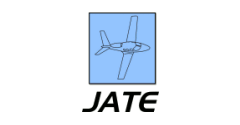Abstract
This paper investigated the use of an eye-gaze-controlled interface in a military aviation environment. We set up a flight simulator and used the gaze-controlled interface in three different configurations of displays (head down, head up, and head mounted) for military fast jets. Our studies found that the gaze-controlled interface statistically significantly increased the speed of interaction for secondary mission control tasks compared to touchscreen- and joystick-based target designation system. Finally, we tested a gaze-controlled system inside an aircraft both on the ground and in different phases of flight with military pilots. Results showed that they could undertake representative pointing and selection tasks in less than two seconds, on average.
Recommended Citation
Shree DV, Jeevitha; Murthy, L. R. D.; Saluja, Kamalpreet Singh; and Biswas, Pradipta
(2018)
"Operating Different Displays in Military Fast Jets Using Eye Gaze Tracker,"
Journal of Aviation Technology and Engineering:
Vol. 8:
Iss.
1, Article 4.
Available at: https://doi.org/10.7771/2159-6670.1184
Included in
Computer Engineering Commons, Systems Engineering and Multidisciplinary Design Optimization Commons


